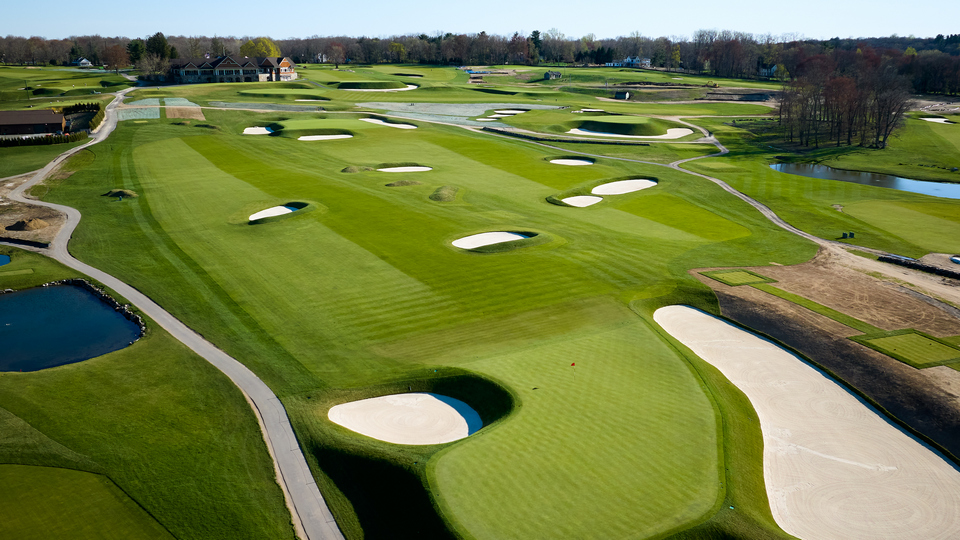1st (Valley) / 437 yards / par-4
2nd (Cape) / 415 yards / par-4
Architect: Charles “Steam Shovel” Banks (1929)
Updated: Brian Schneider / Renaissance Golf (2023-24)
The name Charles Banks will likely not resonate with many golfers.
However, for impassioned golf connoisseurs who inhale all aspects of architecture the name of Banks is well known by the inclusion of his remarkable nick-name- “Steam Shovel.”
Banks taught English at Hotchkiss, a prep school in Connecticut, in the early 20th century. The Yale graduate had the good fortune of meeting Seth Raynor, an engineer and golf course architect who had been hired by Hotchkiss to rebuild its golf course. Banks assisted with that project.
The passion in creating courses lit an internal fire within Banks and he left teaching to join forces with Raynor and Charles Blair Macdonald, the “father of American golf.”
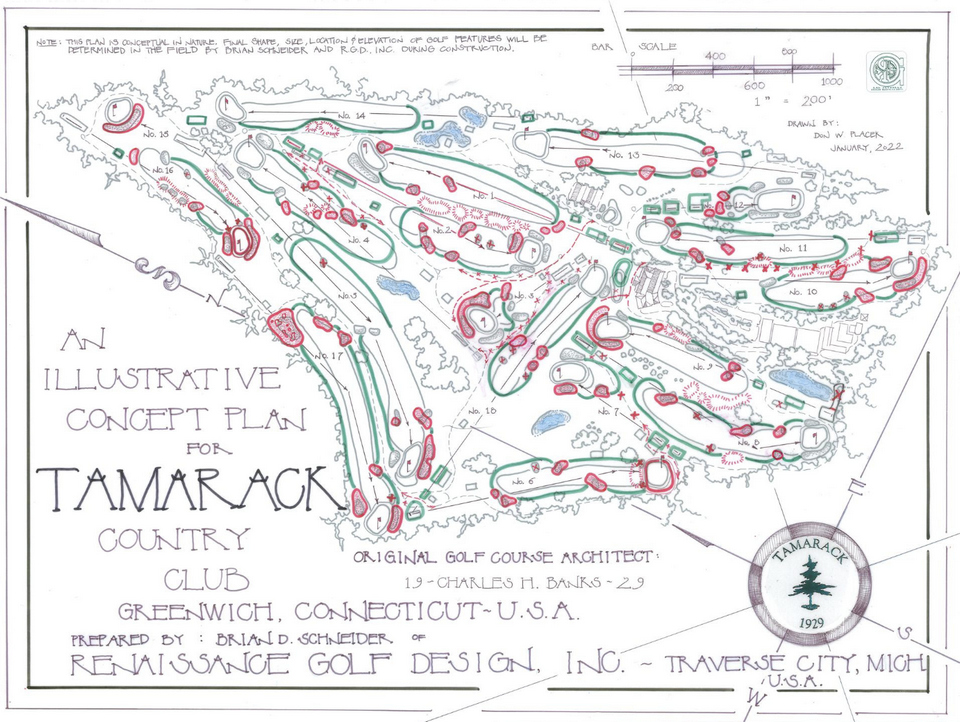
Banks worked with Raynor and C.B. Macdonald for five years supervising construction of Yale Golf Club in New Haven, CT and Mid-Ocean in Bermuda, among others. When Raynor died unexpectedly in 1926, Banks completed ten of his unfinished projects. He then designed and remodeled nearly 30 other courses over the next five years.
His nickname of “Steam Shovel” came from using steam shovels to move massive amounts of earth in creating huge elevated greens and deep bunkers.
One of his most impressive efforts came at Tamarack – located in Connecticut and straddling the New York State line.
Like many courses that came into existence during the classic period of American architecture in the 1920s, the evolution of such layouts often went astray in deviating from the original core philosophy.
Ill-considered actions included adding extensive tree corridors, removing bunkers from key position and failing to keep putting greens in the same dimensions.
The cumulative impact from such poor decisions can be reversed but that only happens when club leadership fully understands the scope of the deviation and why a return to its original premise is pursued smartly with an architect capable in doing that.
Tamarack is well-regarded in the Nutmeg State and club leadership believed the full potential of what Banks originally provided could not only be resuscitated but vastly improved upon.
For that to happen the club needed to make the most important decision in the process – who to hire to do the work? For many clubs in similar situations the answering of that question has proven to be a tough task. Some clubs have hired individuals who failed to follow the original philosophy and opted instead to force upon the layout their own fingerprints.
Over the course of time as courses age and club leadership changes the resulting hodge-podge of ignorant decisions can mean a further erosion of the core design principles. For many clubs, the wherewithal to return to its original premise can be forever lost as endless ignorance and outright stupidity is cemented into place.

Tamarack smartly hired Renaissance Golf Design in Traverse City, Michigan. The man involved with the Tamarack project was Brian Schneider. Schneider is well-versed in the classic period of architecture and carried out successful projects at various key clubs in the Northeast – among them the Walter Travis designs at North Jersey CC in Wayne, NJ and Hollywood in Deal, NJ. The Donald Ross / Charles Banks 36-holes at Montclair GC in West Orange, NJ is another successful effort.
Other clubs with the Banks signature have been smartly updated including Forsgate and Hackensack in NJ and Whippoorwill in New York.
The genius of Banks comes alive at Tamarack the moment you step onto the tee of the opening hole. Listed at 437 yards from the championship tees and plunging downhill 47-feet the newly created vistas are eye-catching, raising the pulse prior to swinging at one’s first shot of the day.
Schneider’s involvement at Tamarack embodies the statement made by former Masters major domo Clifford Roberts who when asked about the changes made to Augusta National, was quick to correct the questioner and stated that “improvements” were carried out – not changes for change’s sake.
The “new” opening hole provides an intoxicating panorama – free of tree clutter and forcing golfers of all levels of skill to keenly focus on the task presented.
A center-placed fairway bunker was brilliantly placed by Banks and is now even more pronounced and steeper. The carry requires a 310-yard shot and the front entrance – at approximately 290 yards – can be reached by many players when turf and wind conditions align.
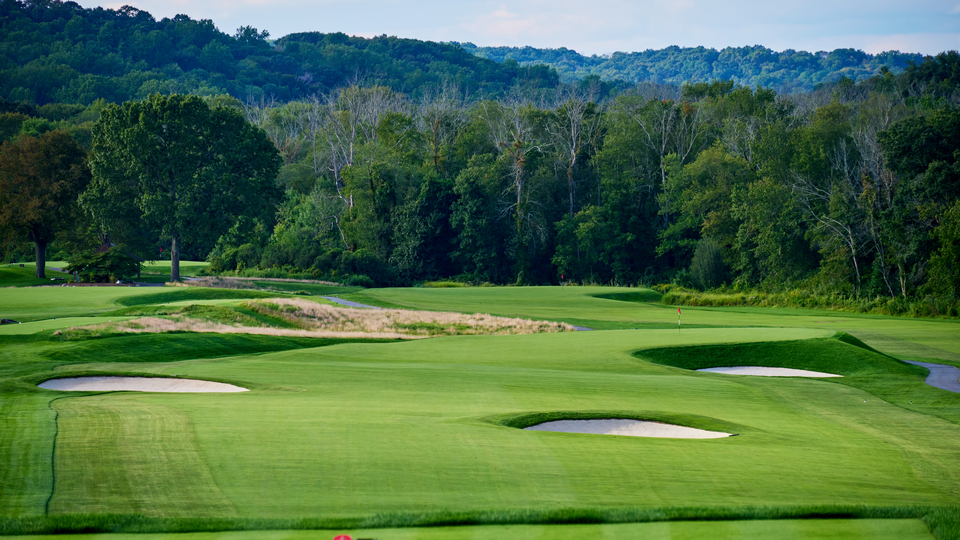
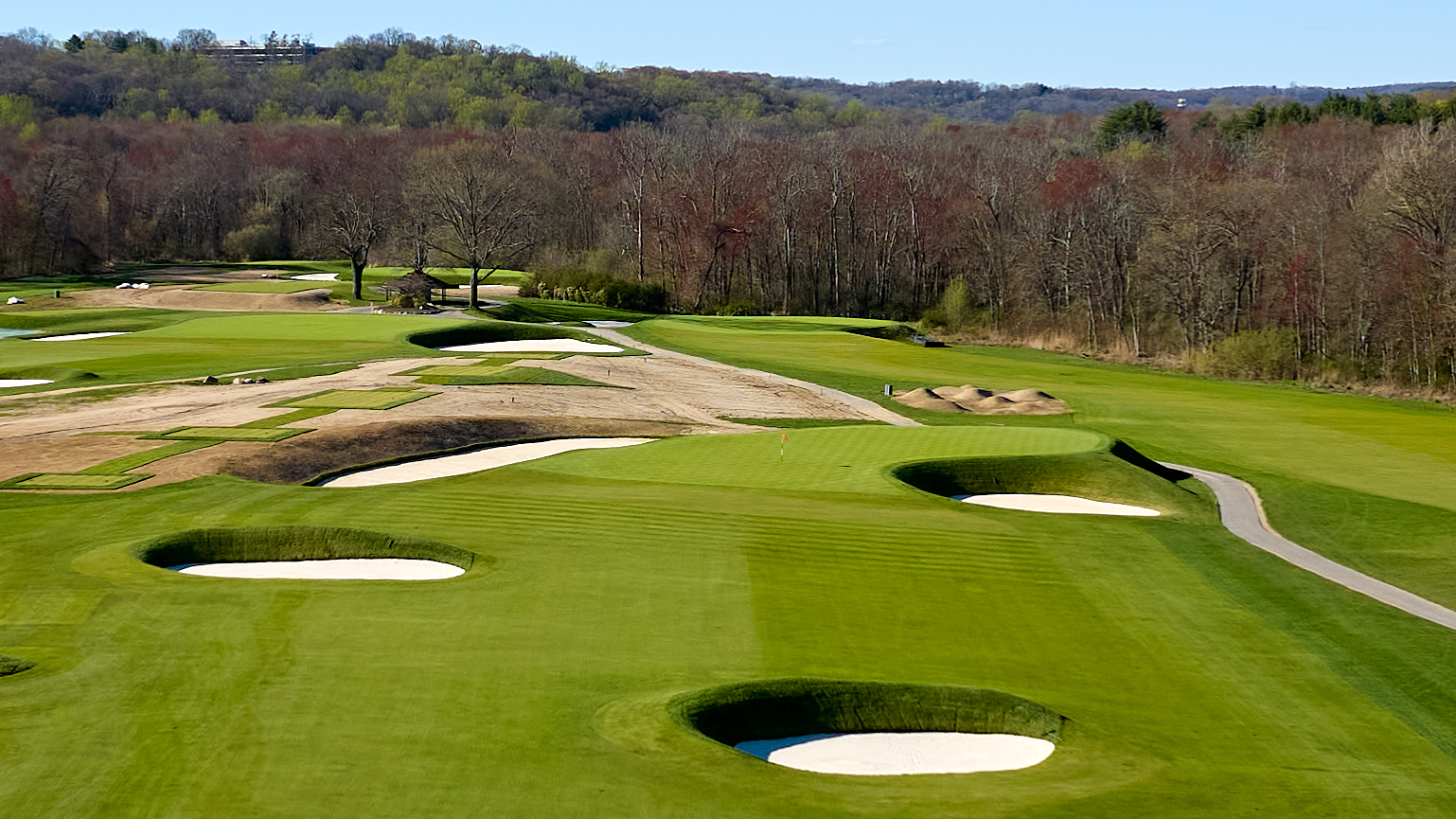
The approach shot to the 1st requires a winning marriage between distance and direction. The square footage for the green is 9,973 and there is a long deep bunker that dominates the left portion of the green. A solitary smaller bunker is aptly located in the right side and serves as a deterrent for any approach that fails to heed its dire consequences.
The putting surface resembles a large “C” with a back right position well-defended by the aforementioned bunker and has steep fall-offs for those going too far right or long.
Opening holes are often thought of as elementary “warm-up” holes – providing a stress-less start to the round. The opener at Tamarack is anything but rudimentary. The challenges are presented fairly with a range of options wisely enhanced.
The second hole at Tamarack received even more involvement from Schneider. The hole reverses directions and though listed at 415 yards plays slightly uphill towards the clubhouse in the immediate background.
The improvements came in several key areas.

Related: When Clifford Roberts ruled Augusta
Schneider repositioned the existing tees slightly left and lowered the tee complex to blend in more naturally with the terrain. A new back and forward tee were added. The 2nd fairway is now joined with the 1st becoming a much broader enlargement of closely mown turf with a series of new mounds in play on both holes.
In addition, there is now an enlargement and repositioning of fairway bunkers aptly placed in areas where Banks had envisioned. Schneider also increased the depth of the fairway and greenside bunkers making them a more foreboding challenge.
The uphill approach to the 11,119 square-foot green is one that will give pause to players to contemplate smartly. Selecting the appropriate club given the elevation change and false front encountered makes the proper choice an imperative.

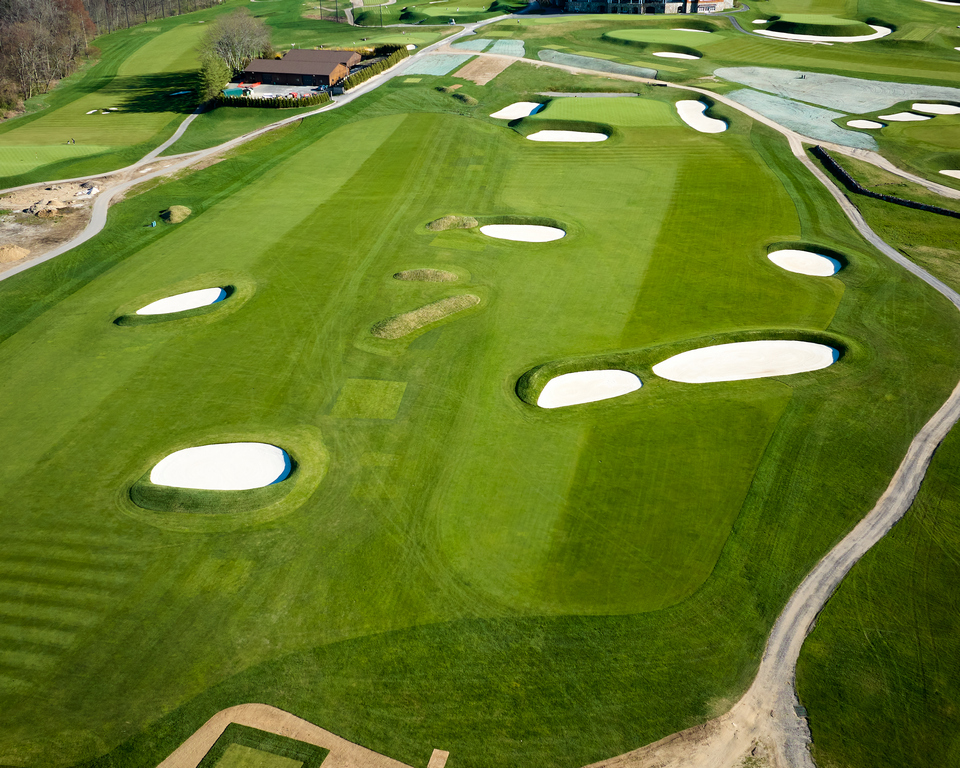
The green also contains an array of vexing movements. Those failing to hit close enough to the daily pin location will be hard-pressed to avoid a three-putt or worse outcome.
Tamarack’s opening two holes provide a quick immersion into Banks’ architectural style. Far too often clubs enter the process in trying to improve themselves, they are pushed and pulled into a variety of ill-conceived directions with results sadly lacking and often counterproductive.
The name Charles Banks is rarely mentioned by even those who consider themselves part of golf’s cognoscenti. The most recent efforts carried out at his various designs are worthy of even more notice and acclaim.
Mike Ballo, Jr. head golf professional at Tamarack sums up the matter well. “It’s a thrilling two-hole start at Tamarack, with timeless and classic architecture now accented by a new-era touch. It poses a mental challenge seldom seen so early in the round, but it also offers numerous ways to get your day off on the right foot.”
***
For more info go to:
Tamarack Country Club | Private CT Golf Course, Tennis & Events – Tamarack Country Club
